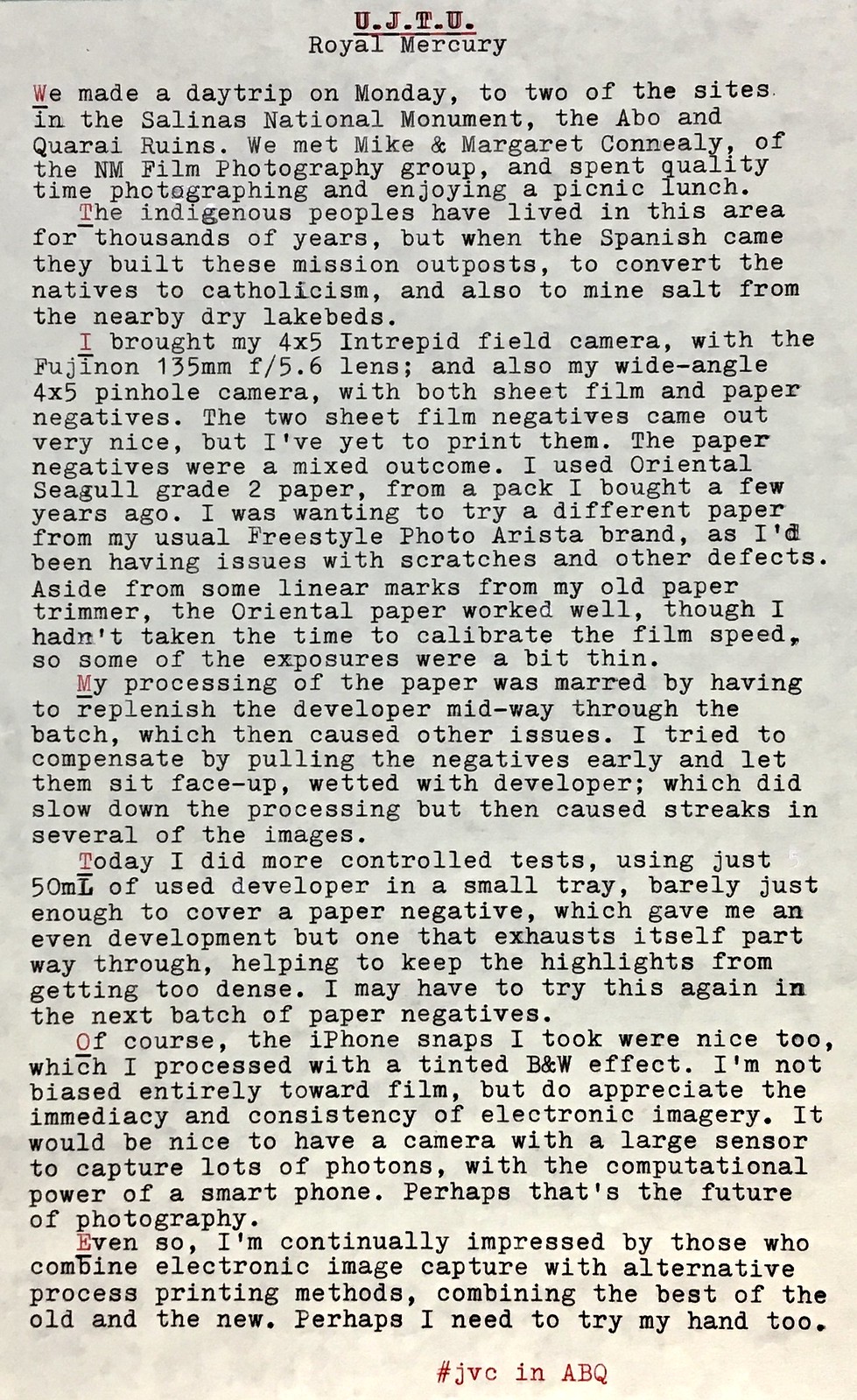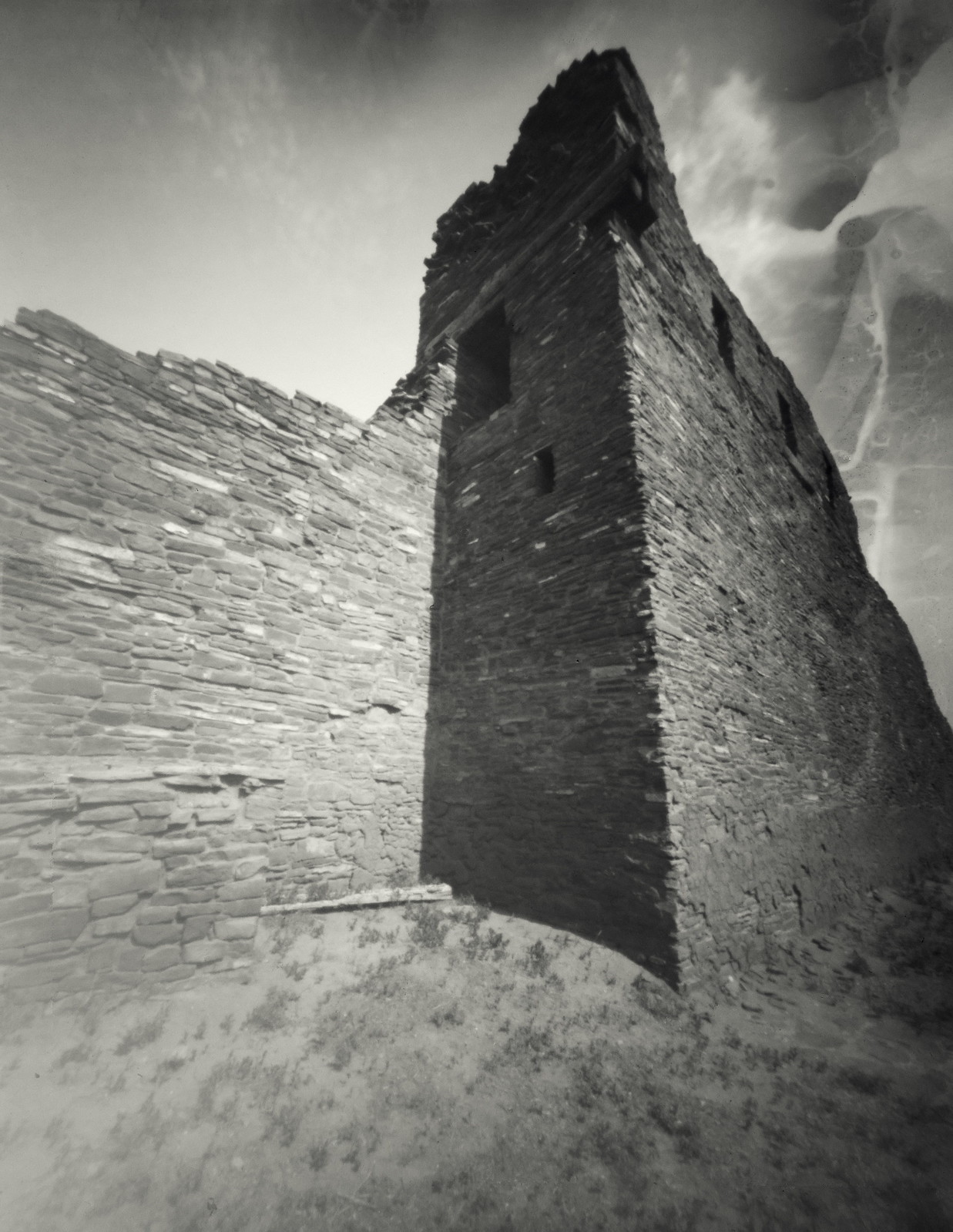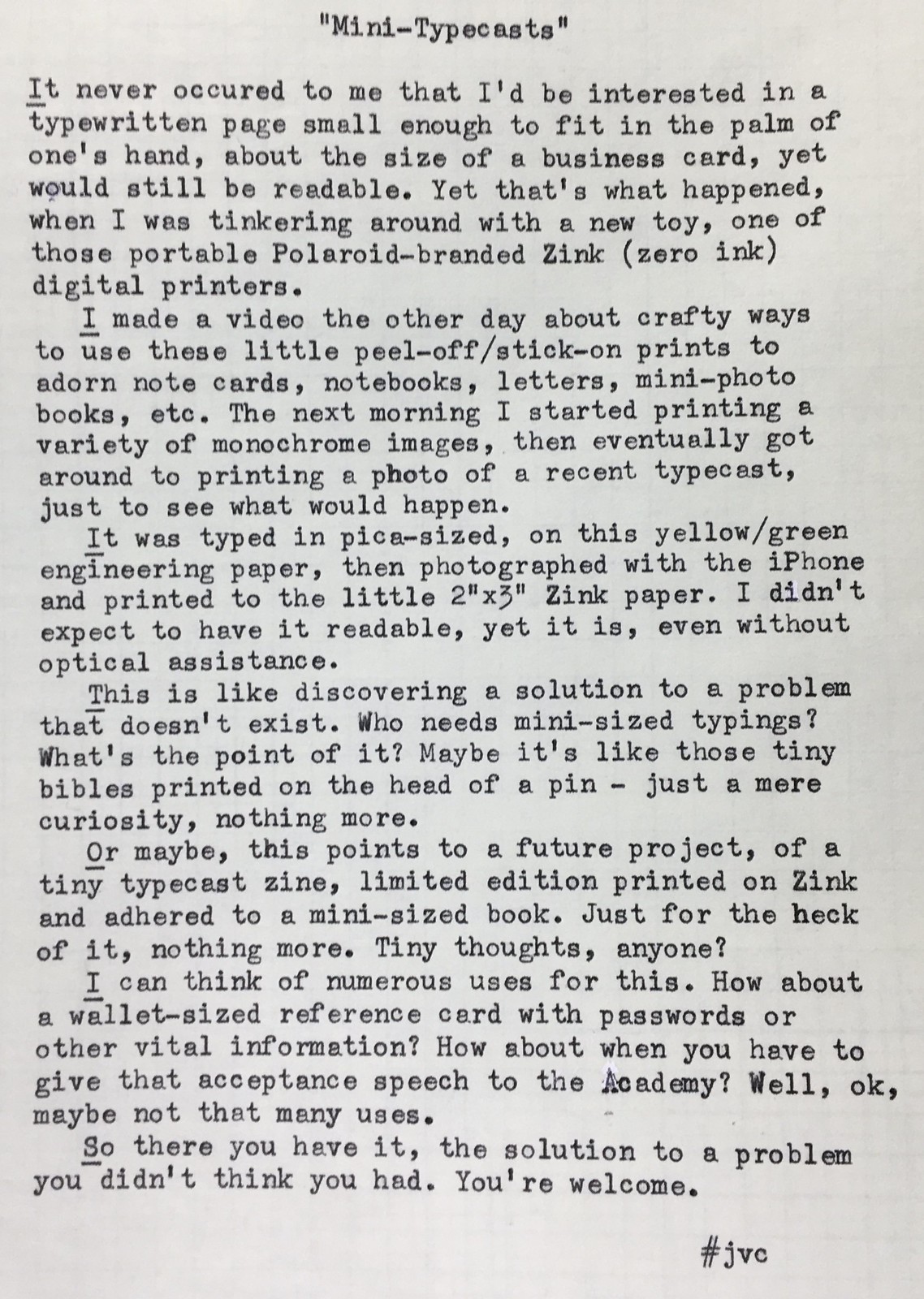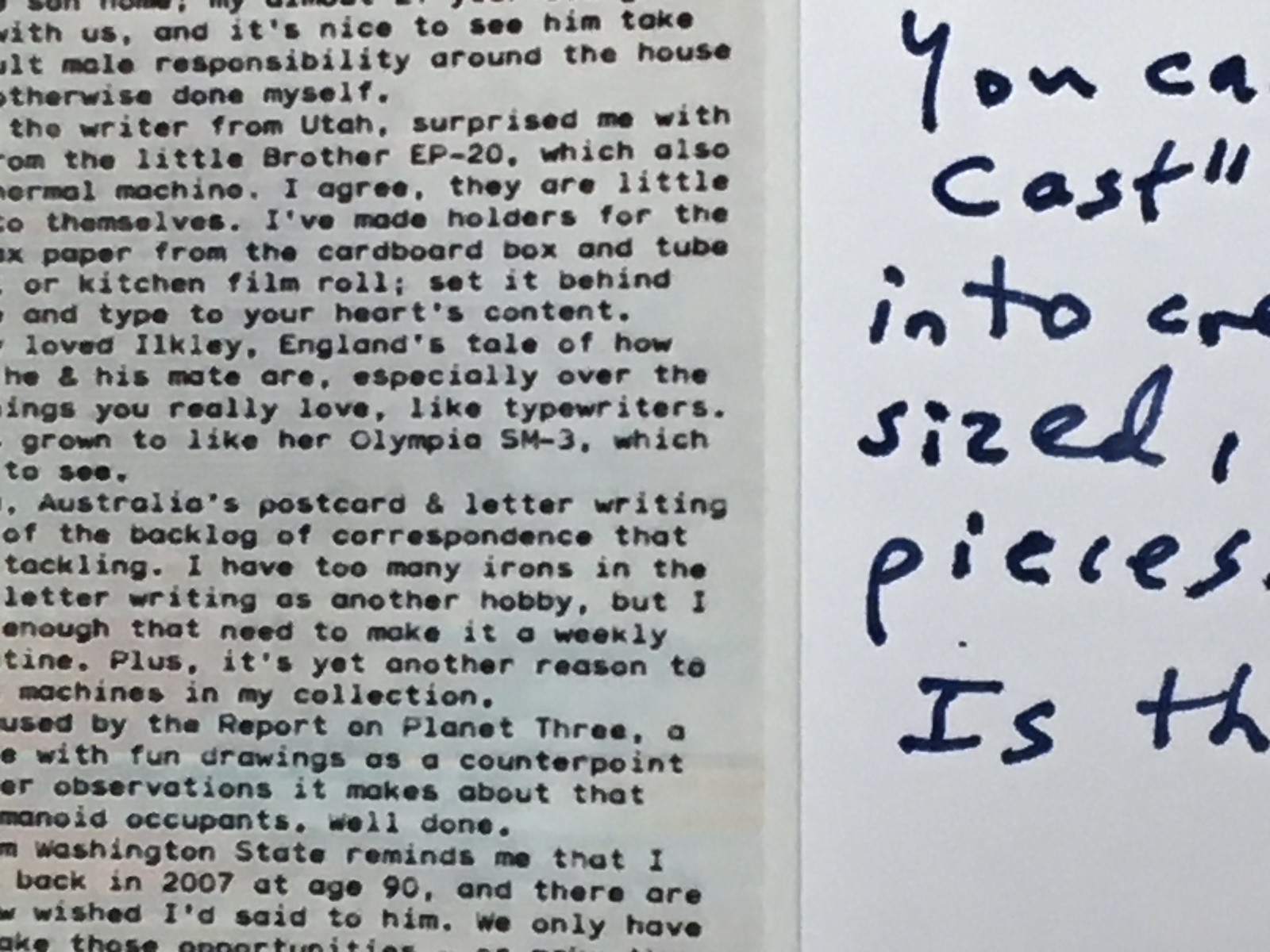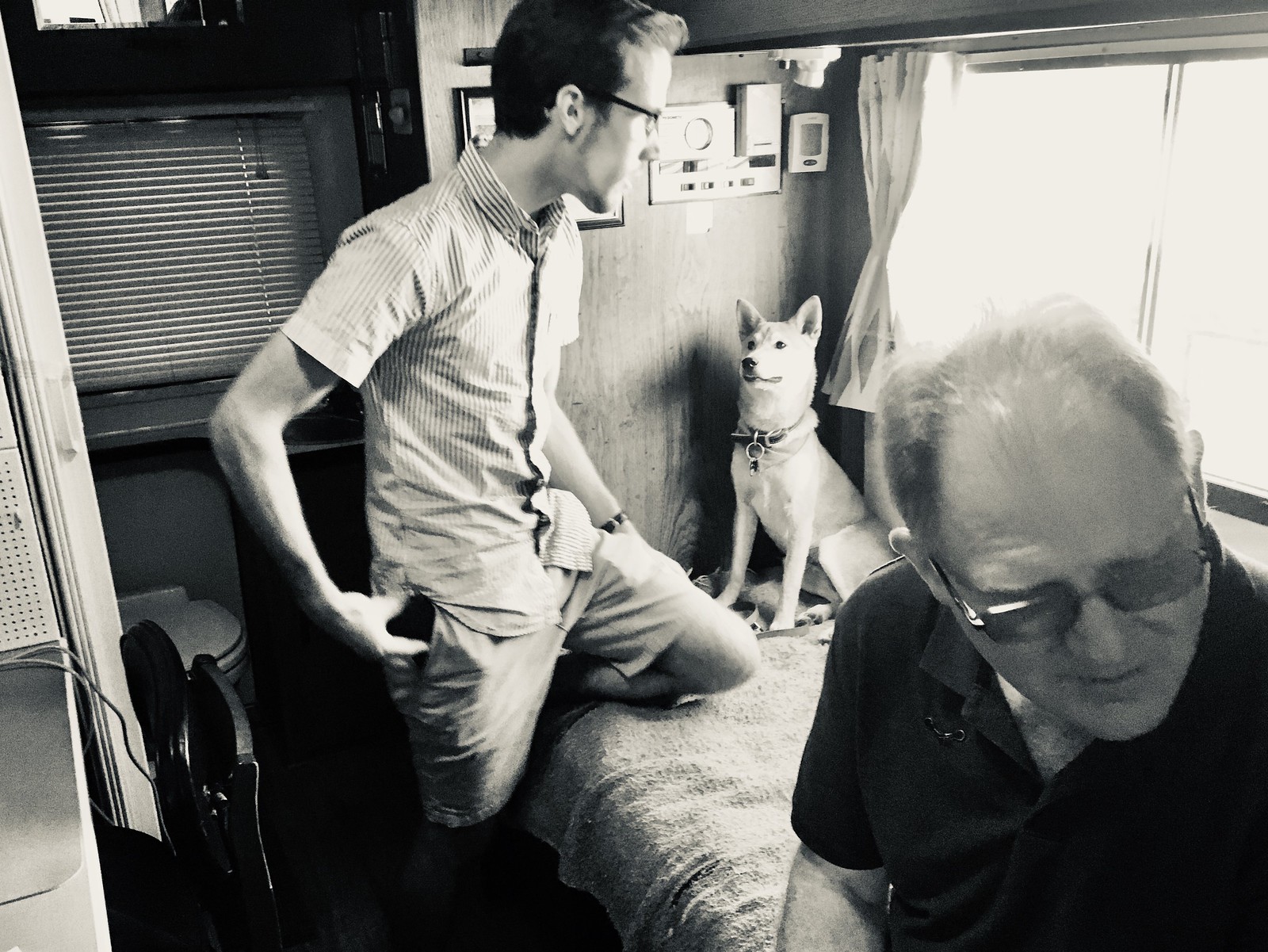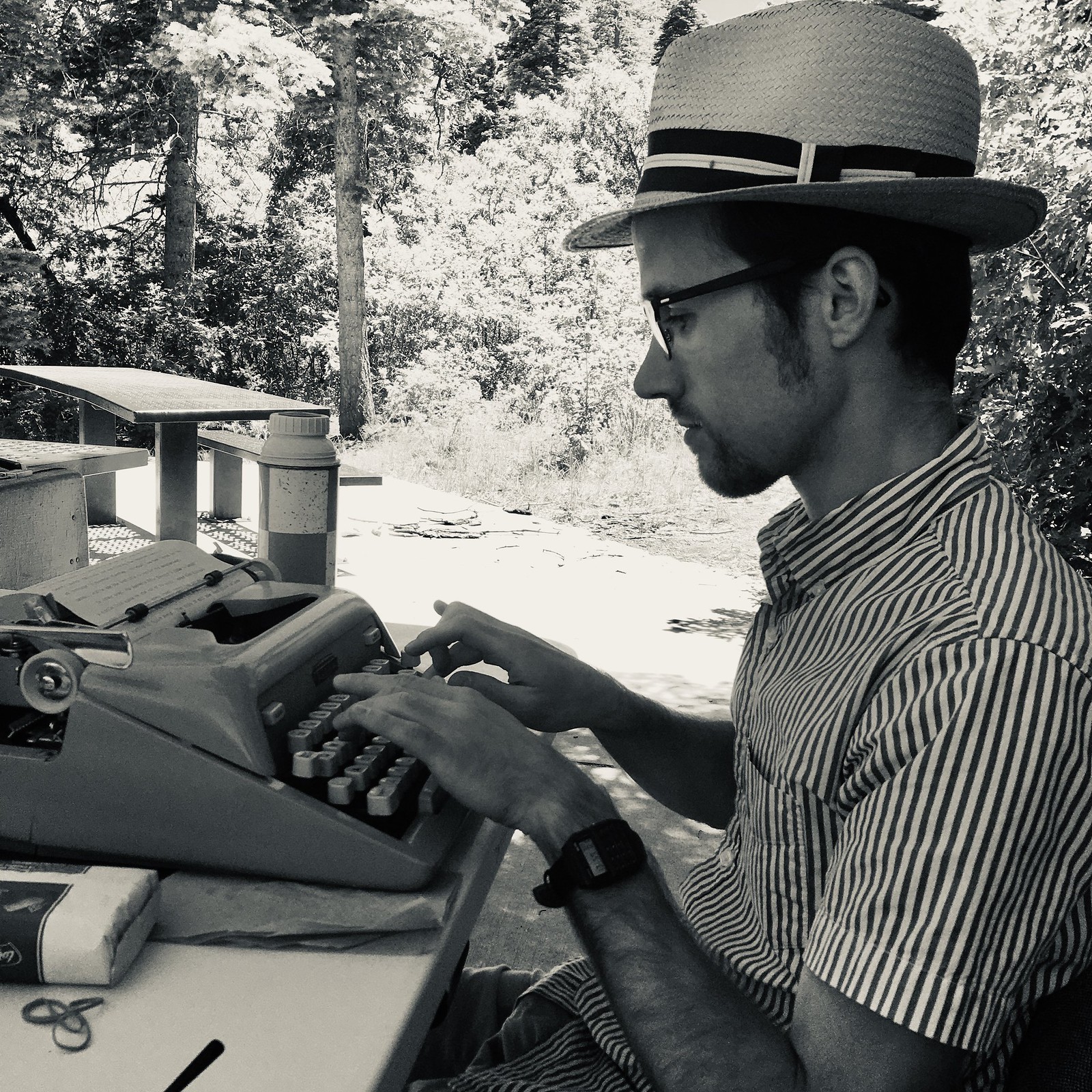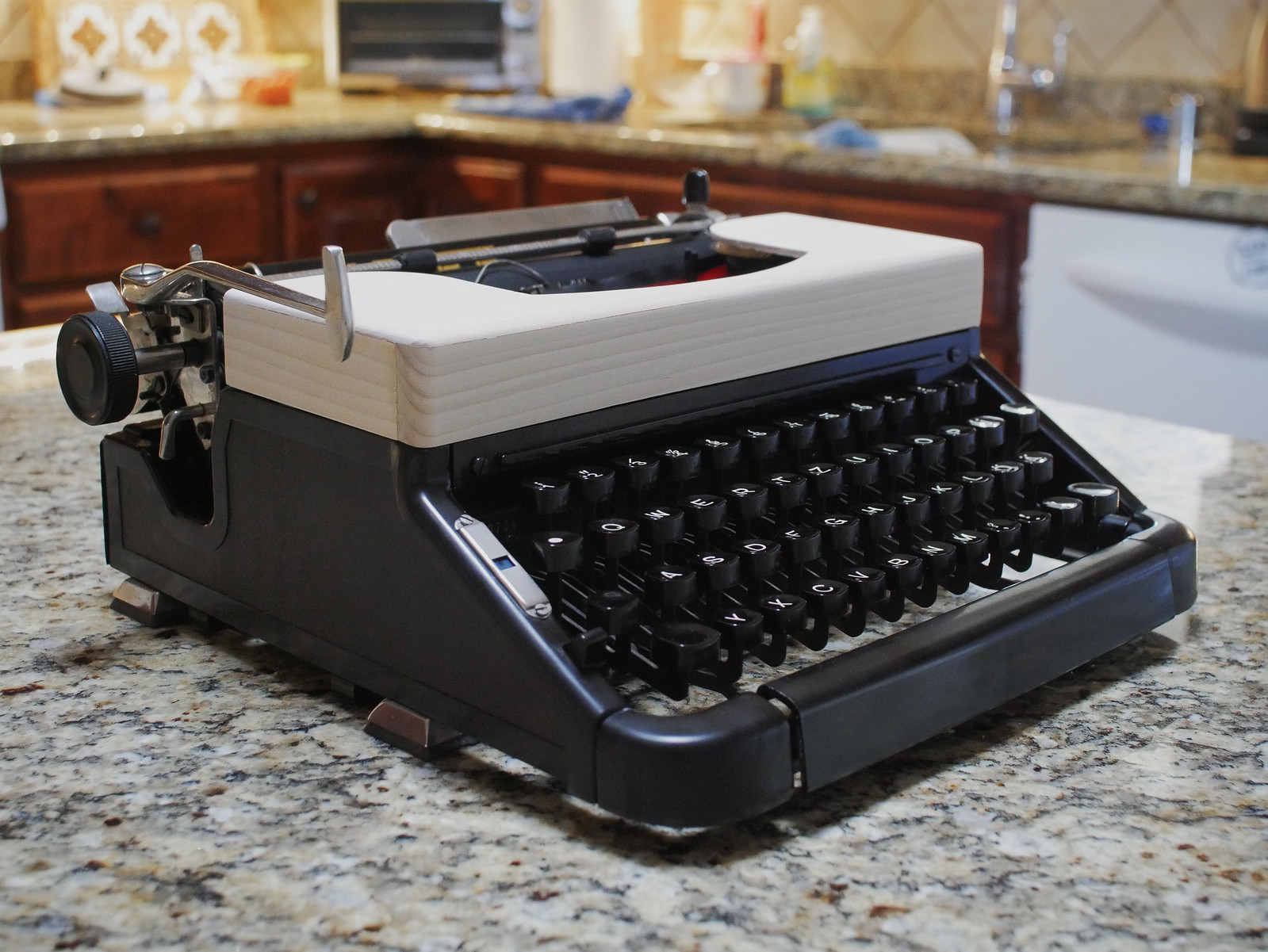I Seem to be an Adverb
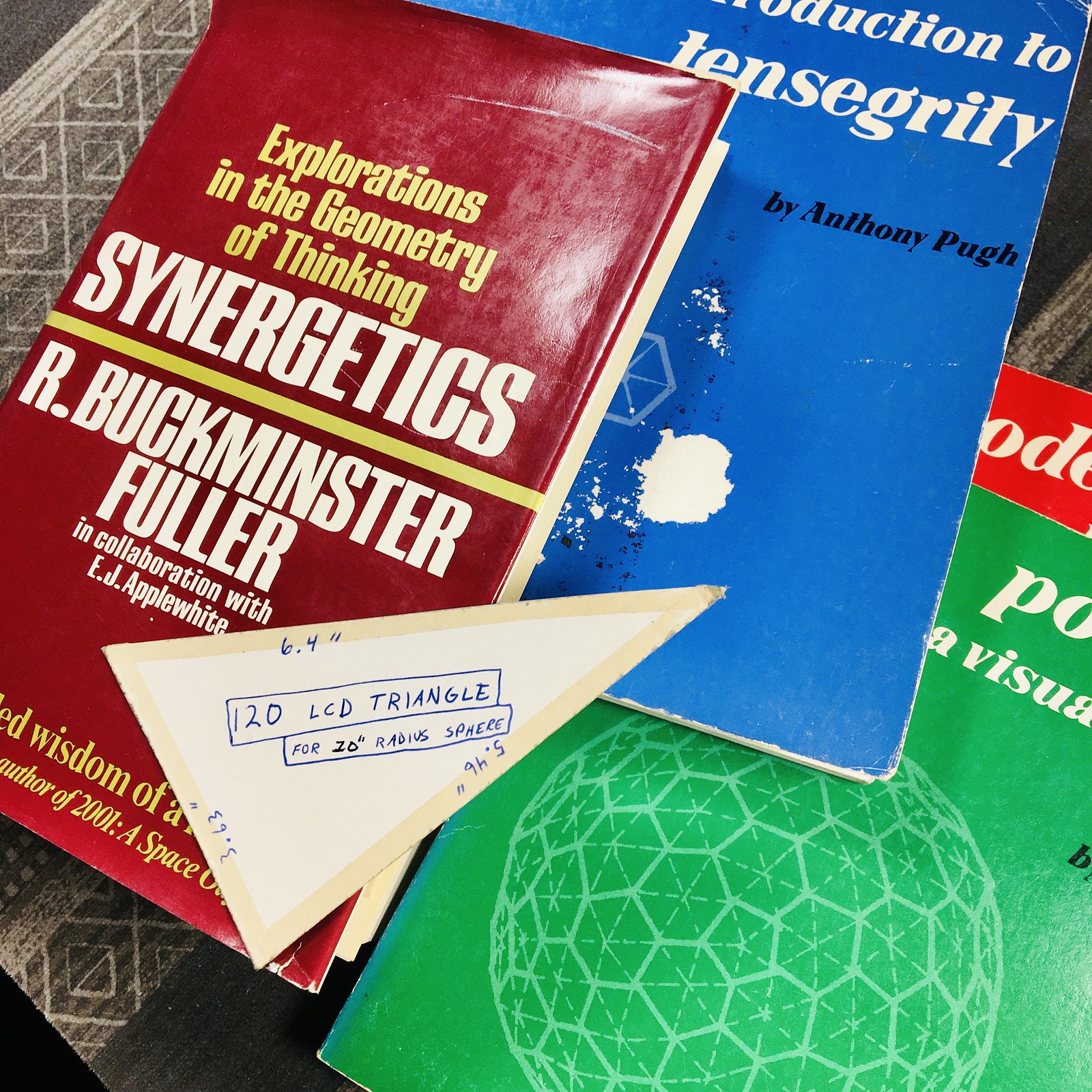
"120 LCD Triangle"

It's 1974 and I'm a skinny, curly-haired nerd, standing in all my teenage awkwardness under the bright New Mexico noontime sun, adjacent to the Industrial Arts building at Eldorado High School, the campus a glaringly bland architectural afterthought comprised of adobe-brown brick rectangles dropped onto a brown dirt landscape on the eastern edge of town. Even today, as I drive by on my way to or from some errand, I'm amazed at its blandness, as if some architect had to go out of their way to achieve this spectacle of aesthetic anonymity.
But it was the early 1970s and Albuquerque's northeast heights was experiencing an explosive population growth, fueled by families whose dads and moms might have worked at the nearby Sandia National Laboratory, a not-so-subtle pun referencing the plowshares being hammered into bombs of unimaginable ferocity. The local school system built campuses like Eldorado, named after that fabled lost city of gold, as an expediency to deal with the enormous population surge. Back then, more school money went to the classroom, in the form of bland buildings designed to house a surge of students; whereas today, in contrast, the administrative overhead of the school system seems bloated and outdated, as the state's educational system ranks near the bottom of the list, in a country that struggles to educate its citizens to any kind of standard that could be considered "first-world."
That skinny, curly-haired nerd is standing outside Rob Mangold's Architectural Drafting class because there are several enormous plastic, air-inflated structures on display, built by said Skinny Nerd. This is the early 1970s, on the waning cusp of the hippie movement, and change is still in the air. One of those articles of change are the works of R. Buckminster Fuller, known affectionately as Bucky, the white-haired messiah-like icon and inventor of the geodesic dome, whose writings Skinny Nerd has devoured in eagerness.
It's over 45 years later and Skinny Nerd is not so skinny any more. But I still have many of those books I collected in my youth, including Fuller's Synergetics, a tome that encompasses his life's work in the form of a structured dissertation that remains, decades later, virtually impenetrable.
Many of my books, once neatly organized by subject matter, are now scattered throughout the house in a manner more fitting the needs of decor rather than library, a compromise I've accepted as the price of living in harmony with my life's companion. I recently pulled down Synergetics from a bookshelf and left it on the patio room table, where my wife, in her curiosity, opened it, glanced at a page, then put it down again, exclaiming "I have no idea what I just read."
Sometimes I feel the same way.
Where this blog article is leading to is a convergence of several ideas. First, there's the concept of what I call "copy-typing," which is sitting down at a typewriter and typing text from some published work, preferably written in the age of the typewriter, where one could easily imagine the work's original author doing much the same thing, in much the same manner. I first started doing this with Jack Kerouac's On the Road, because of my interest in the idea that one of that book's first drafts was written (or typed, depending on whether you agree with Truman Capote's opinion of Kerouac when he quipped "That's not writing, that's typing") on a scroll of paper - which I'd been experimenting with at the time, and wanted to see for myself if indeed the rhythm of the work, its frenetic pacing, could somehow be deduced through the endless roll of paper threaded through a typewriter's platen. I was, and remain, curious to the idea that an author's intention can be deduced by typing what (s)he typed, in the manner of the author's use of the typewriter as compositional aid (while remaining aware than many 20th century writers literally penned their first drafts by hand, relegating the typewriter for the intermediate editing stages). So that's one idea.
The second idea has to do with my choice of author to copy-type from - R. Buckminster Fuller's Synergetics, a dense, obscure, obtuse work that bridges multiple gaps between scientific and philosophical disciplines. While Fuller was perhaps best known for the geodesic dome, his pioneering work on tensegrity structures is more appropriate to my interest in handmade tripods. Tensegrities are structures that isolate structural components into two distinct categories: compressional and tensile. The classic tensegrity structure (the term being a portmanteau of tensional integrity) is comprised of discrete compression-bearing struts suspended within a network of tensile wires or cords in such a manner that the struts don't touch one another. The struts keep the wires tightly pre-stretched, while the wires suspend the struts into a three-dimensional geometric array. They can seem like magic at first appearances, and tend to respond to external stimuli by flexing and redistributing the forces evenly across the tension net and through the load-bearing struts.
I became enamored of Bucky Fuller and his domes while in high school, as Skinny Nerd, and his influence has been periodically felt throughout my life. When, years later, I first happened upon the thought of making my own tripods, I borrowed a bit of the tensegrity principle by using screw-eyes and a loop of cord (serving as a tension member) to stabilize the tripod legs (serving as compression struts) such that as more weight bears down upon the tripod, the system becomes stronger, more rigid - the tension cord loop bears more of the load as compressive forces suddenly transform themselves into tensile stresses.
In the intervening years I've also become interested in tabletop tripods, mainly because of my video-making activities and attendant habit of shooting footage from a seated position at my studio desk. Over the last few years I've cobbled together a handful of primitive tabletop camera supports, the goal being able to assemble them from components readily available at hardware stores, with minimal machining or fabrication needed.
Segue to earlier this week, after I'd finished yet another tabletop tripod build, my fifth, this one an utterly simple design comprised of a central body with legs made from a cheap wooden yardstick cut into thirds (I'd hoped to find painting stir-sticks, but had to make do with the yardstick instead), assembled using simple hardware. It, along with an earlier version, had their legs stabilized with tension cords using the tensegrity principle, as seen in the screenshot below, from my recent video:

After I'd finished the video edit and upload, that next morning I sat at my garage workbench and cogitated over the assemblage of handcrafted tripods before me, representing an evolutionary design process, wondering what I'd do with them, the Skinny Nerd never very far away in my mind. The tripod seen to the right in the above photo had nicely-fashioned round dowel legs, but the head design was a bit wonky, making the camera mount slanted, necessitating the use of a ballhead. The middle tripod featured a handmade ballhead cobbled together from various bits and bobs, but by now I'd begun using Joby-brand ballheads on all my tripods, making this handmade version redundant. What to do?
What I did was cut a short piece of square poplar stick to serve as a new tripod body; drill several holes, then borrow the round legs from the righthand tripod, drill out its existing mounting holes; then borrow the head-plate of the righthand tripod, along with the threaded knobs from the middle one, and assemble the whole thing into a new tripod that uses a similar design as the lefthand tripod. Whew!
By now you should be getting to understand that my tripod infatuation was merely an ongoing series of design experiments. Ephemeralization is what Bucky would call it - the continuing process of doing more with less.

The sixth tripod
Rather than a loop of cord that slips between the screw-eyes on each leg, the triangle of tension cords is made of three discrete segments, so the relationship between each leg is fixed to how far each can be pulled taught, helping to ensure the legs remain in a mostly equilateral triangular arrangement. And once again, the harder you press down on the head, the stronger and stiffer the system gets.
You don't have to stare at a tripod very long before you begin to see it resembles a tetrahedron - a three-side pyramid. The three legs represent three of the edges, the tension cords represent the other three edges at the bottom, and the camera mount on top is the top vertex, with the legs' feet being the other three vertexes. This is important, not only because a tetrahedron is the only stable geometric solid, but because Bucky Fuller's system of geometry is all based on tetrahedrons as its starting point.
Tripods are stable because they're three-legged. One or two legs require some constant servo-feedback-driven articulation system to maintain balance (as employed by bipedal homonids), and four legs will intrinsically wobble, unless the legs are absolutely the same length, on an ideally flat surface (which, being Euclidean, doesn't exist in nature). Three is the ideal amount required to be stable; no more, no less.
Here's what Bucky has to say about the tetrahedron, from section 620.00 of Synergetics:
"In the conceptual process of developing the disciplines for carrying on the process of consideration, the process of temporarily putting aside the irrelevancies and working more closely for the relationships between the components that are considered relevant, we find that a geometry of configuration merges from our awareness of the minimum considered components. A minimum constellation merges from our preoccupation with getting rid of the irrelevancies. The geometry appears out of pure conceptuality. We dismiss the irrelevancies in the search for understanding, and we finally come down to the minimum set that may form a system to divide Universe into macrocosm and microcosm, which is a set of four items of consideration. The minimum consideration is a four-star affair that is tetrahedral. Between the four stars that form the vertexes of the tetrahedron, which is the simplest system in Universe, there are six edges that constitute all the possible relationships between those four stars."
I told you it was dense! (As an aside, I might mention that Fuller's prose is as densely layered, and obliquely structured, as that little Austrian paper-hanger's work, that started all the trouble leading up to WWII - though Fuller's is much more important.)
When I opened up my hardbound copy of Synergetics (which appears to be out of print, but is selling used on Amazon for a mere $967 - but rest assured, the softbound version is still available at a mere fraction of the cost!) I found a triangle of cardboard serving as a bookmark, at section 205.00 Vector Equilibrium, seen in the top photo of this piece, a template for making a 20" diameter geodesic sphere. I don't actually remember making such a model, but this triangular template is evidence that I pursued it to some degree, serving as further evidence of my infatuation.
Returning to the typewritten quote at the top of this article, I might be making more of these copy-typings in the near future, excerpted from Fuller's Synergetics, and other books. I've thought about submitting them to the One Typed Page blog of Daniel Marleau, but don't think they fit well alongside the more personal writings other people are sharing therein. So perhaps you may see in the near future more brief copy-typecasts posted here, though with less exposition than today's article, which you can be thankful for.
I've lived long enough that my childhood and young adults years seem to reside in a distant past far removed from the present. Inside this overweight middle-aged guy is Skinny Nerd, still yearning to be set free. Yet every once in a while, in the course of working on some project, I unearth an artifact that once again reminds me of the person I used to be. And those immature infatuations, though seemingly far removed in the past, continue to inform me in ways I've yet to fully understand, reminding me once again that the past, no matter how obscure, serves as preparation for the future.
The tabletop tripod video:
By the way, the title of this article is an allusion to another of Bucky's works, that is selling for a mere $245 used; and somewhere around this place I have that same copy.
Oddly enough, my wife has suddenly taken on a newfound appreciation for my clutter of dusty books.
Labels: books, Bucky Fuller, copy-typing, DIY, memories, tripods, typecasting

